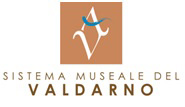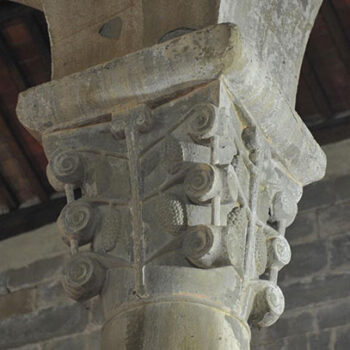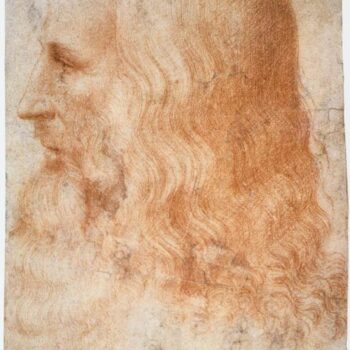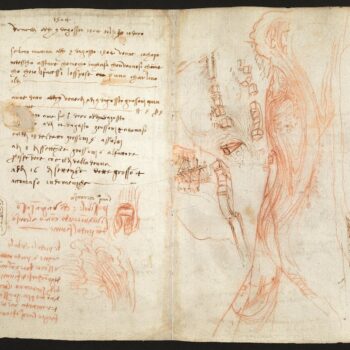Valdarno di Sopra is an Etruscan and Roman land. Among its hills, between the Pratomagno massif and the Chianti Classico mountains, there are numerous Romanesque churches full of charm and history. Important parishes with exclusive functions such as christenings, which covered the role of basilicas in the cities, built in the early Middle Ages along the ancient roads of the Roman or even Etruscan era. One of these roads was Via Clodia, the road that connected Fiesole with Arezzo crossing the entire Valdarno di Sopra, an important communication route even in the Middle Ages both because it was used by pilgrims headed to Rome as an alternative to Via Francigena and because it guaranteed the connections between Florence and the main centers of the area. Over time, Via Clodia was renamed Via dei Setteponti because, with its bridges, it passed over seven rivers and streams. And there are seven beautiful parish churches of medieval origin which, starting from Pieve di San Giustino in the province of Arezzo, we can find in the 40 kilometers, reaching Pieve di San Pietro a Pitiana in the municipality of Reggello in the province of Florence. Among these, the Parish Church of Gropina (Pieve di Gropina) undoubtedly stands out. And one of its wonderful capitals is now depicted in the logo of our Consortium, evidence that the cultivation of vines has been one of the main activities of Valdarno di Sopra for thousands of years.
A territory of opulent wealth, scene of bloody battles between the two cities which, at the end of the Middle Ages, vied for dominance over the region, Florence the Guelph and Arezzo the Ghibelline. And it was right here that at the end of the 13th century the Florentines built three walled lands or three fortified villages, in response to the bishops of Arezzo and their imposing castles. This is how San Giovanni Valdarno, Terranuova Bracciolini and Castelfranco di Sopra were established. With the end of the Republic of Arezzo in 1384, the territory was annexed to the Florentine Republic and the boundaries of the Arezzo department were set precisely in Valdarno di Sopra, along a line that also included the three walled cities built by Florence a century earlier.
And it was this finally pacified landscape that Leonardo Da Vinci chose as a place of inspiration and study of him. Considered the genius par excellence for his intuitions, for his paintings and built machines, as well as for his reclamation works, Leonardo traveled the Strada dei Setteponti several times, analyzing the flow of the Arno river for his studies on the circulation of the human body, but also by observing the natural spectacle of Balze, even arriving at intuiting and describing their geological origins. But the landscape of Valdarno di Sopra is depicted and clearly visible in many of his most famous paintings, starting with the Mona Lisa, where, in the foggy environment in the background, we see Balze reproduced in ocher yellow on her left, while on her right we find the equally famous Ponte Buriano. Landscape also re-proposed in the paintings of Saint Anne and the Virgin of the Rocks, but which can also be found in some panels attributable to his youthful era, now kept in the Uffizi Museum, like the Annunciation and the Baptism of Christ.
We can see that Leonardo had studied this territory in depth also from his description of the Arno Valley in his manuscripts taken from the Leicester Code or Hammer Code: “From Valdarno di Sopra up to Arezzo, there was a second lake which occupied all the aforementioned valley for the space of 40 miles in length […] This valley receives on its bottom all the earth carried by the waters of the turbid one, which can still be seen at the foot of Prato Magno remaining very high: and below it, we can see the deep marks of the rivers that have passed there, which descend from the great mountain of Prato Magno […]”
Valdarno di Sopra has an ancient charm which shines not only from the natural environment, still largely uncompromised and uncontaminated, but also from the artistic heritage of its historic centers, such as San Giovanni Valdarno, Masaccio’s birthplace, designed by Arnolfo di Cambio, in whose Basilica of Santa Maria delle Grazie’s Museum, a masterpiece such as The Annunciation by Beato Angelico, Loro Ciuffenna or the small village of Borro stands out. An area where great masters of the Renaissance and beyond have lived and worked, artists capable of giving away artistic treasures of great value. Among these, the works of the Della Robbia family, famous for having invented, thanks to the genius of Andrea Della Robbia, glazed terracotta, which over the years has become a symbol of Tuscany itself, definitely stand out.






